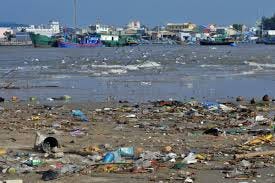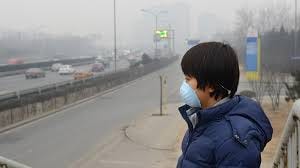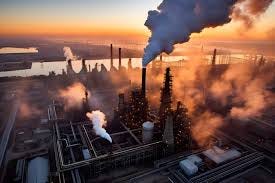Notes
Innovation for the World.
Today in many places, though far removed from from the backyards of some, ecological and long – term economic risks are reified given the discharge into the air of leviathan amounts of carbon emissions, not just from gas - powered vehicles but from manufacturing facilities and centers, and the way these same entities also adulterate and pollute nearby waters. The time is now to turn one’s direct and undivided attention to the questions provoked by low – level environmental risk and further damages to the ecological ecosystem that provides a decent and livable environment as self – regulating and self – repairing -- and to the extent emissions and other forms of pollution do not completely overwhelm the earth’s nature of self – preservation. People can agree that “dumping” is a sin and in many cases against the rules, though what in the decades since these questions have presented themselves has seriously and with tangible results slowed the pace with which the ecological environment is damaged, and what has remedied the challenge that long – term environmental abuses jeopardize economic health, and jeopardize the human and social systems and devices that are supported by the well – known economics of income and capital formation? Not only are there long – term economic risks to continued destruction of the natural environment; this continued abating of “green” considerations without regard to past, present nor future human welfare that is indicated by its magnitude but little regard for even a palliative against ecological dangers provokes additional risks. These have potentially more destructive power given the way nature and its physics respond to ongoing and increasing contamination, in what concerns human existence and the basic qualities of everyday life, that will distort, deteriorate and disintegrate and with greater and greater problematical social and economic – financial impacts. An example of this is an illustration on the subject of the carbon emissions of the top twenty world economies : In order to meet the goals of current resolutions having to do with reducing carbon emissions and how this relates to global warming and in order to reduce the increase of global temperatures, emissions must be eliminated by as much as ninety percent in places.
Each and every individual, and this includes every economic entity no matter its scale nor scope, at this point should have an environmental strategy formally documented given the results of past and current monitoring of greenhouse gas emissions and pollutants in our soil and waters, and that conforms with national policies on climate mitigation and related economic policies of large, and small scale entities and those in between. Most countries on earth are at present vulnerable to climate change and global warming, and those that cannot form climate mitigation policies deserve help on “green” policy or policies, including management and other assessments that establish ties between policies and public finances to catalyze a unified and standardized set of strategies to mitigate climate change and to unify efforts on the environment between countries and regions. Financial institutions should allow for lending in view of implementation of environmentally friendly policies in order to disrupt the trends of environmental contamination – crisis lending, essentially – in order to help with efforts against climate change and in order to prepare for climate change barring the success of current efforts to mitigate. Financing of environmental crisis efforts should ensure the resilience of proper environmental conditions, should be sustained, adaptive, and ensure the sustainability of further environmental mitigation and preservation. Non – governmental organizations would be very important as well as helpful in the efforts of mitigation and assuring the resilience and sustainability in the processes of curing environmental ills. These quasi – political and administrative groups can promote “green finance” and “climate finance” as supported by lending and at a low cost to government, and to entities, even small emerging actors, to correct environmental failures.
To the contrary, and this presents an unfortunate risk in and of itself, the world is saddled with too much debt right now (during 2024), and at least some of this overlending can be attributed to the prolonged and concentrated use of lending facilities in money centers that presently find that presumed or projected failures in efforts to cure the environment call for lending funds that are not there or that cannot be allocated to such projects while maintaining the integrity of the lender. Precluding the funds needed for spending on adaptive and mitigating green campaigns could adversely affect nation – states’ physical environments given the present overlending, and there is no present financial axiom that will allow hedging against environmental distress and destruction. One can determine that investments in ecology projects are disruptive and expensive, and they present significant risks and possibilities of unfinished work and even failure. With this in mind, originators of environmental projects need to carry out “blended” finance and hedges against the risks of environmental danger and contamination or destruction. Private investments could reduce the financial uncertainty, and increase adaptiveness and preparedness around environmental projects along with investment “guarantees” from financial institutions thereby making green lending a government policy to enhance the financial ecosystem that surrounds, and has surrounded these issues of environment and ecology for many decades.



Dive into your interests
We'll recommend top publications based on the topics you select.
